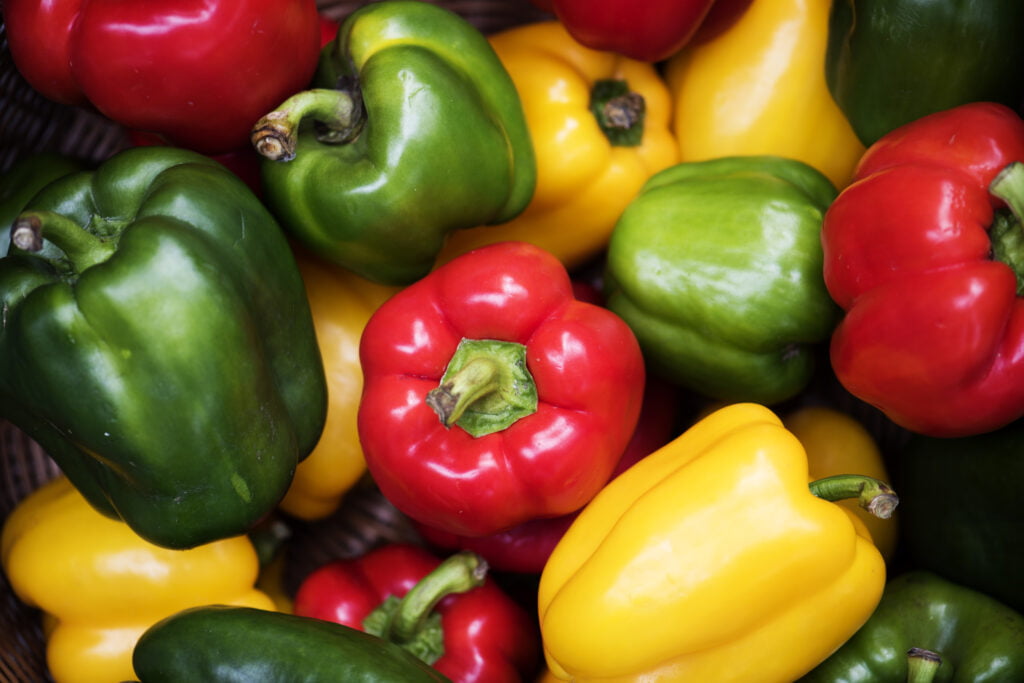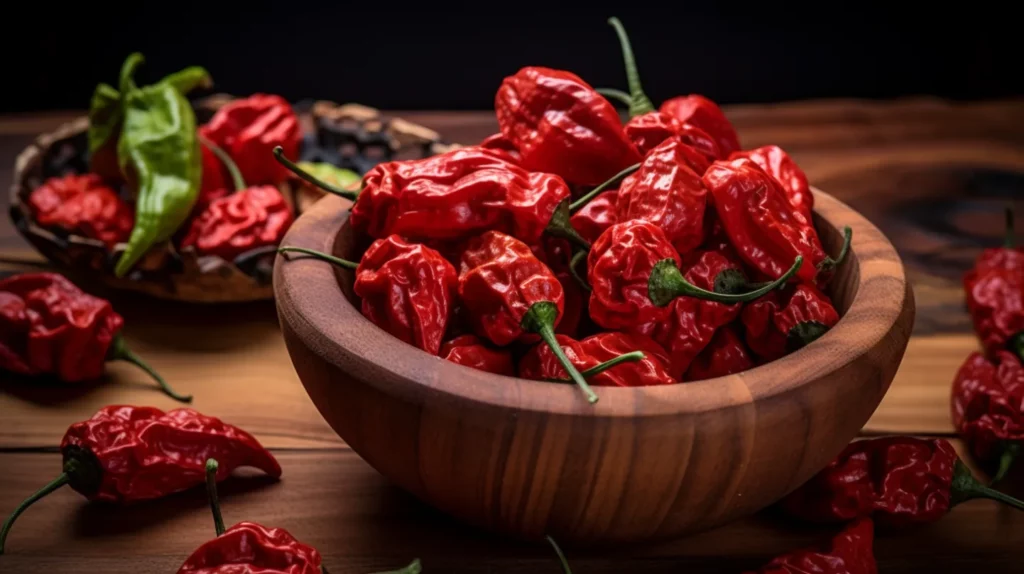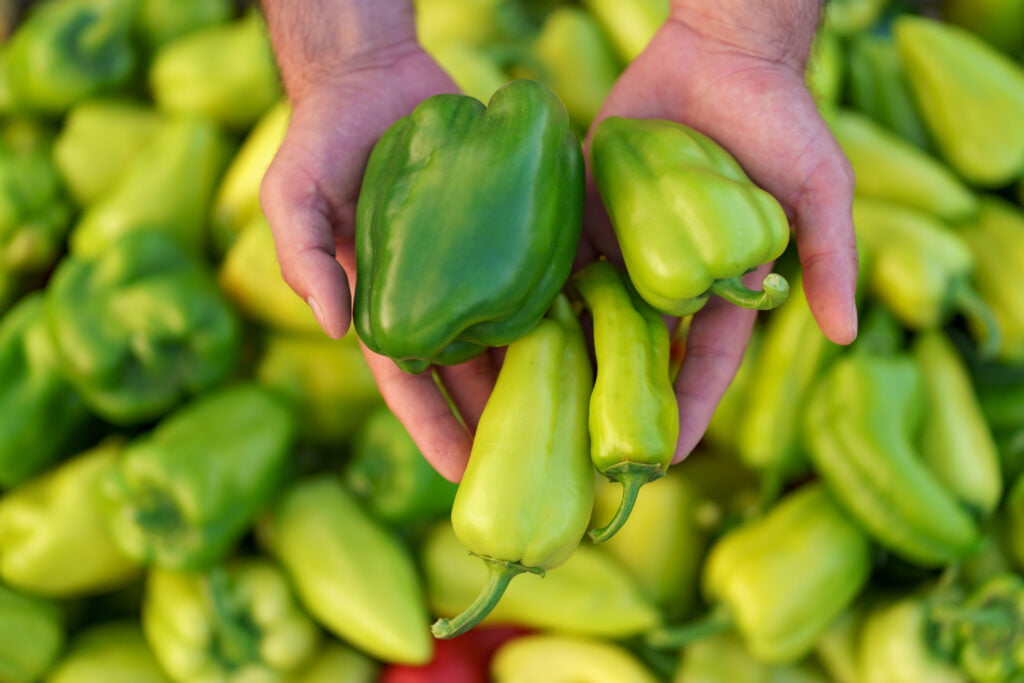23 Interesting Facts about Peppers

Introduction
Peppers come in many varieties, shapes, sizes and flavors. Both bell peppers and chili peppers are widely used for cooking worldwide. This article will explore 23 fascinating facts about these popular types of peppers.
Facts about Bell Peppers

- Bell peppers can be green, red, orange, yellow or purple depending on ripeness. Unripe green bell peppers are tart and crunchy. As they ripen, they turn red, orange, yellow or purple and become sweeter.
- Red bell peppers are simply ripe green peppers and are sweeter. A red bell pepper is a mature green bell pepper. As chlorophyll breaks down, the red pigment lycopene becomes visible and the flavor becomes sweeter.
- Bell peppers have the most vitamin C of any fruit or vegetable – more than oranges! One large red bell pepper contains over 300% of your daily vitamin C needs. They have even more than citrus fruits.
- The scientific name for bell peppers is Capsicum annuum. They belong to the nightshade family Solanaceae along with tomatoes, potatoes, and eggplant.
- Bell peppers originated in Central and South America. Wild pepper plants still grow in parts of Mexico, Central America, and the Andes.
- Columbus found them in the Caribbean in 1493. On his second voyage to the Americas, Columbus brought back pepper seeds to Spain.
- Peppers were named by Christopher Columbus after black peppercorns. Columbus wrongly thought the spicy chili peppers he found were related to black pepper from Asia.
- Bell peppers have no capsaicin, the chemical that makes chili peppers spicy. Unlike their spicy cousins, sweet bell peppers contain no capsaicin at all which is why they have no heat.
List of Peppers by Heat

New chile peppers are cultivated every year, but the hottest known pepper in the world is the Carolina Reaper. The bell pepper ranks at the bottom of the hotness scale with zero heat units. Check out everything in between on this list of common peppers and their Scoville heat units:
| Pepper Name | Scoville Heat Units (SHU) |
|---|---|
| Carolina Reaper | 1,400,000 – 2,200,000 SHU |
| Trinidad Moruga Scorpion | 1,500,000 – 2,000,000 SHU |
| Ghost Pepper | 1,000,000 – 1,500,000 SHU |
| Red Savina Habanero Pepper | 500,000 – 750,000 SHU |
| Habanero Pepper | 350,000 – 500,000 SHU |
| Scotch Bonnet Pepper | 200,000 – 350,000 SHU |
| Birds Eye Chili | 50,000 – 100,000 SHU |
| Cayenne Pepper | 30,000 – 50,000 SHU |
| Serrano Pepper | 10,000 – 23,000 SHU |
| Jalapeno Pepper | 2,500 – 8,000 SHUs |
| Poblano Pepper | 1,000 – 1,500 SHU |
| Anaheim Pepper | 500 – 2,500 SHU |
| Pepperoncini Pepper | 100 – 500 SHU |
| Bell Pepper | 0 SHU |
Facts about Chili Peppers

- There are over 60 varieties of chili peppers just in Mexico. From mild ancho peppers to fiery habaneros, Mexican cuisine makes use of many types of chilis.
- Chili peppers originated in Peru and Mexico over 6000 years ago. Archeologists have found ancient remains of chili peppers dating back thousands of years in South America.
- The Scoville scale measures the spiciness of chili peppers. It measures the concentration of capsaicin. A jalapeño ranges from 2,500 to 8,000 Scoville units.
- The Carolina Reaper is the world’s hottest chili pepper. With a staggering 1.6 million Scoville units, the Carolina Reaper holds the Guinness World Record for spiciest pepper.
- Birds cannot taste the spiciness of chili peppers. Their taste receptors do not detect capsaicin. This helps in dispersal when birds eat pepper seeds.
- Chili peppers have more vitamin C than oranges. Ounce for ounce, chili peppers like cayenne and habanero contain more vitamin C than citrus fruits.
- Capsaicin in chili peppers deters insects and fungi. It evolved as a natural pest deterrent to protect the peppers from predators.
- Chipotle peppers are smoked jalapeños. After harvesting, jalapeños are dried and smoked to make the popular chipotle flavor.
- The shishito pepper plays “Russian roulette” with spiciness. Most grilled shishitos are mild, but occasionally you’ll get a spicy one in the batch.
Health Benefits and Uses

- Peppers contain antioxidants like carotenoids and vitamin C. These compounds can help neutralize harmful free radicals to combat disease.
- They can help combat inflammation. The capsaicin in hot peppers has anti-inflammatory properties and may ease joint pain.
- Chili peppers help clear sinus congestion. Spicy foods like chilis make mucus membranes secrete, temporarily relieving blocked sinuses.
- Cayenne pepper can help stop bleeding. The capsaicin triggers pain receptors, so blood vessels constrict and slow bleeding.
- Peppers have been used in traditional Chinese medicine. Black peppercorns aid digestion while chilis treat pain in traditional practices.
- Both bell peppers and chili peppers are versatile ingredients in many cuisines worldwide. Their diversity, nutrition, flavor and culinary usefulness make them staples in kitchens globally.
Conclusion
This article covered 23 fascinating facts about peppers. We learned about the many varieties, origins, chemistry, uses, and health effects of both bell peppers and hot chili peppers.
These flavorful, nutritious peppers will continue to be dietary staples thanks to their nutrition, heat, and incredible versatility as ingredients. Both bell peppers and chilis are now important crops, foods, and spices used in traditional cooking across the world.





